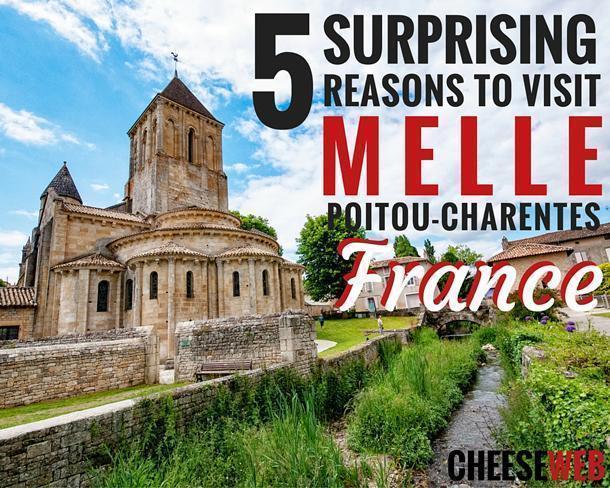
Melle is a charming town of roughly 4000 inhabitants, in the Poitou-Charentes region of France. Perched above the Béronne River, its narrow, medieval streets wind up to the top of a small hill.

Walking around Melle, you can’t help but admire the architecture and green spaces
The town does not appear on any top 10 lists but it has a fascinating history that surprised us. It’s exactly the type of place we like to discover and today we’re sharing 5 reasons you should visit Melle too.
1. Visit the Royal Silver Mines
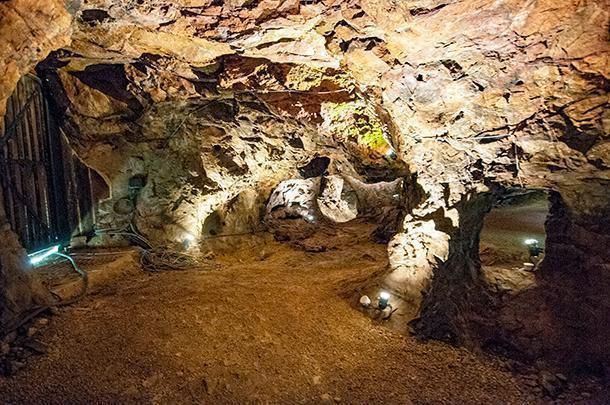
Inside the silver mines, you can explore the caves and tunnels
Melle was founded during the reign of Charlemagne, likely because silver was discovered nearby. The geography of the area was perfect for silver and experts have found numerous mines around Melle. The most important discovery was a mine right next to Melle, now called the Mines d’Argent des Rois Francs.
Operating between 602 and 995, the mine was also given the right to mint coins between 864 and 995. The mine then disappeared from records, until it was rediscovered, in the 19th century, when the cliff face was quarried to build roads. Although the original entrance to the mine has been lost, over 20km of tunnels still exist underground, with 350m open to the public for guided visits.

A tour of the silver mine is a fascinating look at ancient techniques
I found the mine fascinating, not only because we were underground, but because we could see the silver in the rocks. Our guide, Jean-Philippe Marnais, explained how the silver was extracted from the mine, separated from the rock, and turned into coins.
Although historians know the general process for extracting the silver, the details have been lost to time. Jean-Philippe and his team have actually recreated the process, in order to film it, and are working with experts to refine the steps.
A visit to the mines includes the chance to watch the film and a guided tour, with a full explanation of the process of extracting the silver and minting a coin.
2. Discover the Romanesque Triad
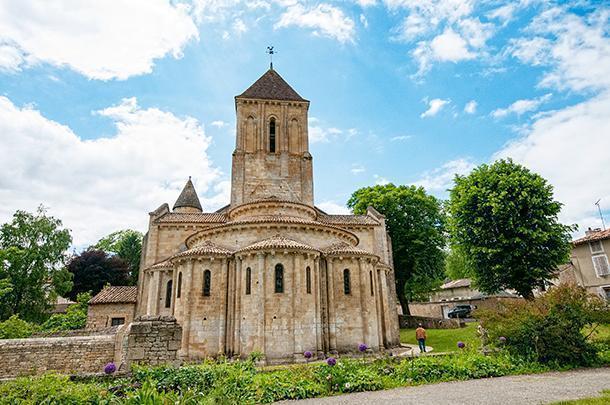
Romanesque Saint-Hilaire church is on the UNESCO World Heritage list
In the Middle Ages, the people of Melle raised not one but three churches: Saint-Hilaire, Saint-Pierre, and Saint-Savinien. All three were built in the Romanesque style, during the 11th and 12th centuries, pointing to a prosperous period for this town.
The Church of Saint-Hilaire, listed by UNESCO as a stage on the Way of St. James (Chemin de Saint-Jacques-de-Compostelle), is beautiful inside and out. Outside, the entrances feature numerous sculpted details, such as a huge sculpture of a man on a horse above the north door. The sculpture is said to be the Lord of Melle standing over the people and protecting them from danger. It is quite an imposing piece to walk under as you enter the church.
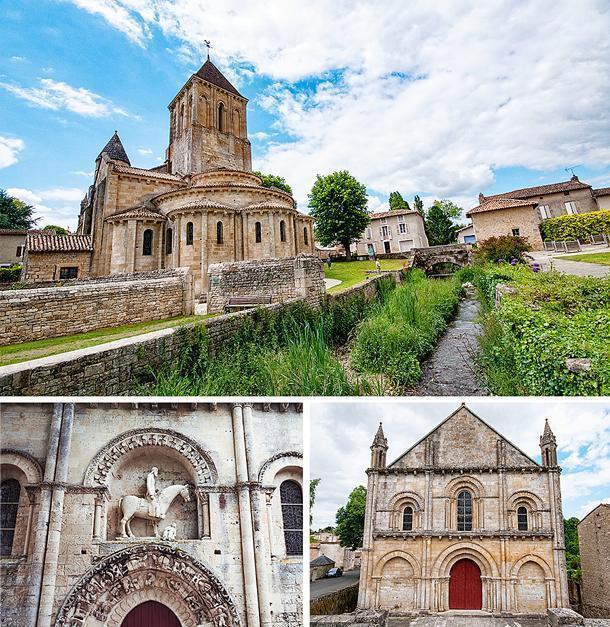
Saint-Hilare’s exterior includes some magnificent sculptures
Inside, the white stonework makes the interior bright and airy. But the piece that draws your eyes is a marble altar in the centre of the choir. Created by Mathieu Lehanneur and installed in 2011, this marble altar is stunning. The edges are stratified as if it was rising up out of the ground, playing with light and shadow as it rises. A small pool of water, filled with water from the nearby Béronne River, connects the piece with the environment around the church. It is a beautiful work of functional art that fits in perfectly with the white stone of the building yet contrasts with the ancient architecture.

The modern white marble altar is a stunning contrast to the Romanesque architecture of Saint-Hilare

The alter swirls and reaches out to the columns around it
If you need another reason to visit, the church is also home to an automated machine that plays religious music; an “ecclesiastical jukebox.” I wonder if it has any songs in English?
Saint-Hilaire is open to visitors all year round and the beautiful nave should be at the top of your list. Visits to Saint-Pierre and Saint-Savinien are unfortunately only possible in the summer when they are both used to house art exhibitions. Nonetheless, the exteriors of both are lovely examples of the Romanesque style and there are some interesting sculpted details on each.
3. Walk the Discovery Trail

What could be more restorative than a walk around Melle’s botanical Discovery Trail
There’s no better way to recover from long days of driving in our motorhome, than taking a walk through nature. Melle is surrounded by green space and the town has tapped into this to create a 7km botanical trail around the town’s edge. This original arboretum is classified as one of Poitou-Charentes’ 13 “Remarkable Gardens” (Jardins Remarquables”) and it is easy to see why. Broken into three smaller sections, each part of the Discovery Trail specializes in particular trees and features churches, fountains, and restored washhouses.
The “Chemin de Decouverte” is a public area and is free to visit all year long. Walking the shady trail is perfect on a warm summer’s day and is magical in the autumn, with the colourful gold, yellow, and orange leaves on display. It is a lovely walk even if you aren’t interested in the details of the 1400 trees along the way.
4. Admire Melle’s Contemporary Art
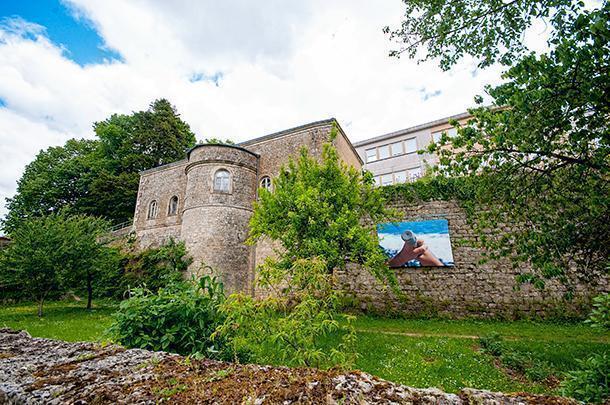
Contemporary art contrasts with the ancient architecture around Melle.
Art is an important part of Melle’s DNA. On top of the art exhibitions in the churches, the town organizes a summer biennial International Contemporary Art festival. This year the work of 30 artists was put on display around the town. Each artist responded to the theme of “Earth Gardeners Heavenly Gardeners.” We were too early for this year’s festival, but we were able to see the nine permanent installations from previous biennials dotted around the town. The Contemporary pieces are a colourful contrast to the town’s ancient architecture.
5. Taste Local Products
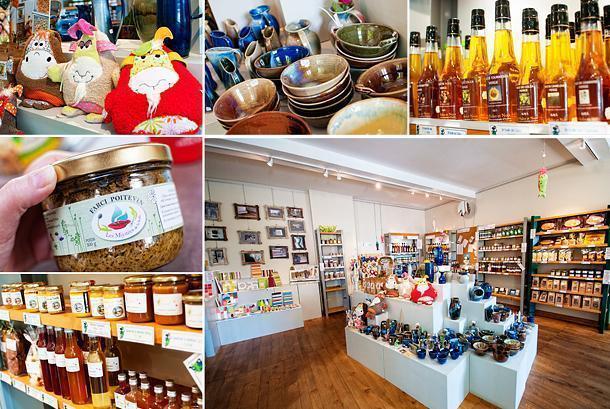
Inside the Tourist Office is a shop featuring regional products.
We love trying new foods and local specialties, so it was a wonderful to see a section of the Melle Tourist Office selling local artisanal foods and handicrafts. Everything from bread to cheese and jams to oils was on display. Visit hungry at your own peril!
At the tourist office, we met with Anne-Laure Gallois who started her own small company, Art et Gourmandise, to produce high-quality pastries, chocolates, and other goodies. She does her best to source ingredients locally, organically, and sustainably.
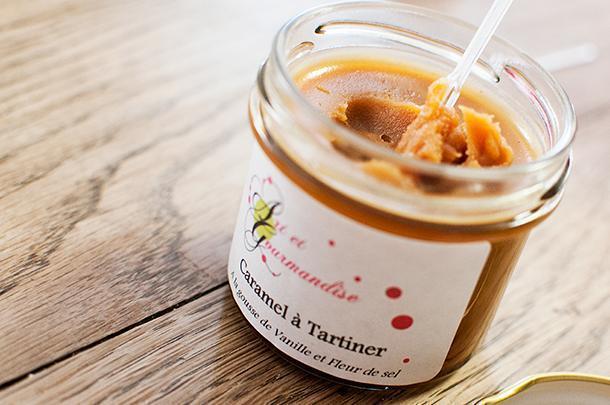
Homemade salted caramel spread – yes, please!
We tasted her homemade jam and a delicious caramel spread, which blew us away. We couldn’t resist taking some home!
For a taste of other products, check out Melle’s Friday farmer’s market. Here you’ll learn what is in season. Be sure to get your hands on some of the local goat’s cheese, “chabichou.” It’s delicious!
If all of the above activities aren’t enough to keep you satisfied, you can also check out the Monet & Goyon Motorcycle Museum or numerous other attractions in the area.
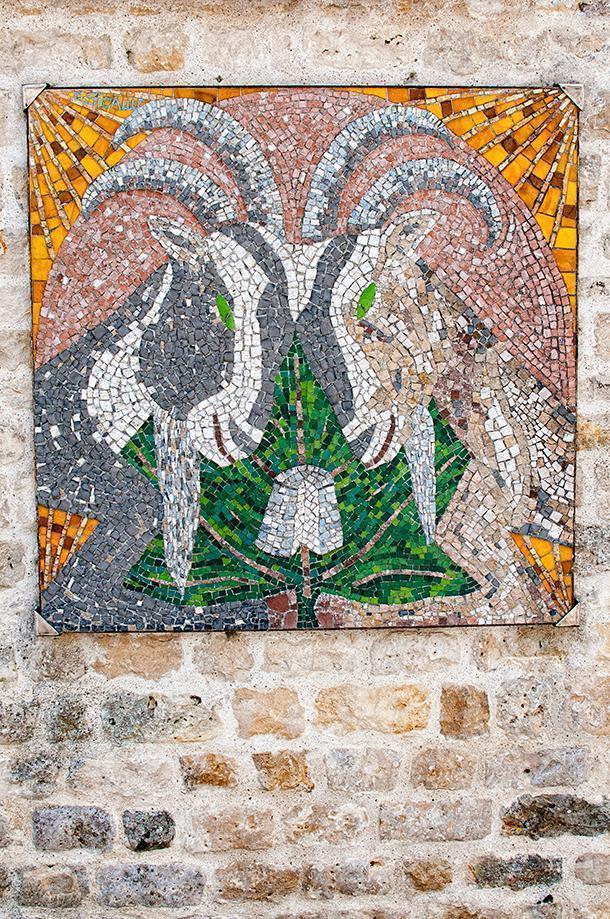
How can you not love a town that has art dedicated to goat cheese?
Melle surprised us in a great way. When we were planning our visit, Melle seemed like a sleepy spot on our itinerary. However, after spending a day there, we realized our mistake. Packed with history and with a variety of things to do, Melle should be in your Poitou-Charentes travel plans.
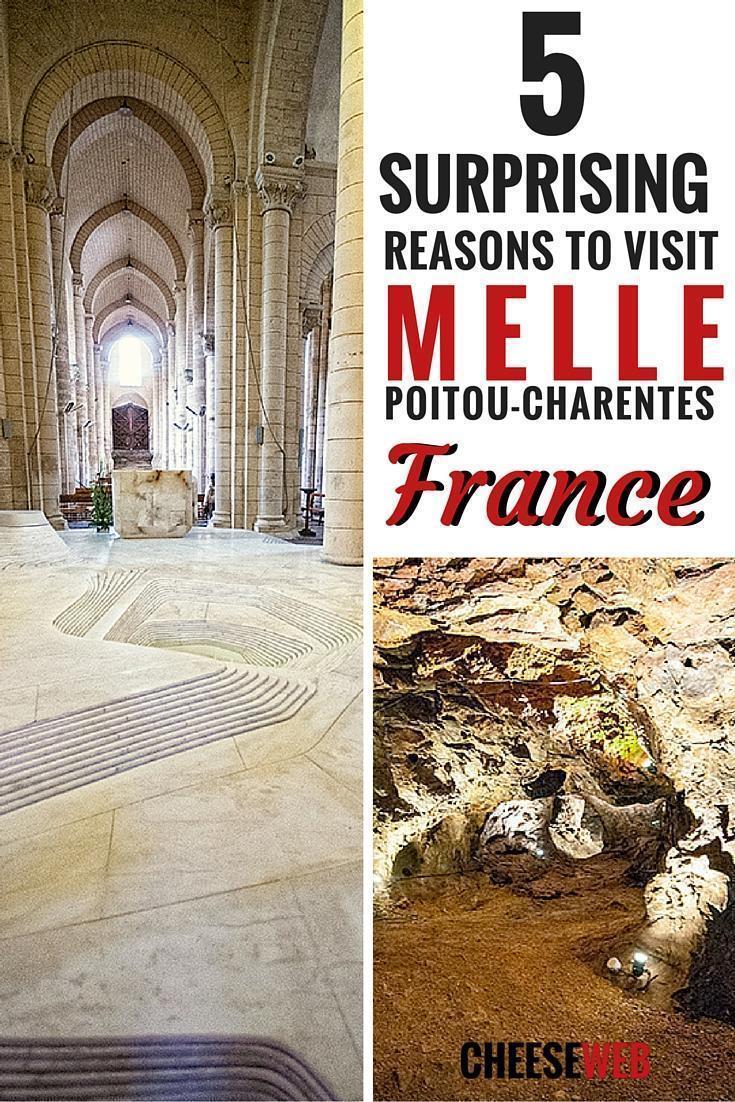
Like this article? Pin it to Pinterest!
We’d like to thank our guide from the Melle Tourist Office for a lovely visit, and the Région Poitou-Charentes Tourism office for hosting us in the area. As always, all opinions are our own.
- Wise Review: How to Save Money on International Currency Transfers - January 20, 2017
- Our 50+ Best Belgium Gifts Online - November 29, 2016
- Review: Crowne Plaza – Le Palace Hotel and Restaurant, Brussels, Belgium - September 30, 2016
